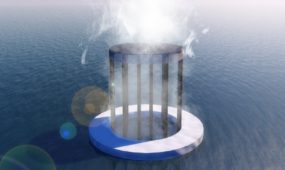How we discovered the 'Higgs bison', hiding in plain sight in ancient cave art
Research & Development

Sign up to receive notifications about new stories in this category.
Thank you for subscribing to story notifications.
The paintings record a world of cave lions, mammoth, bison and horses, which we are only just beginning to unravel using the combined technologies of ancient DNA and radiocarbon dating. The results show that despite studying cave art for hundreds of years, we have been blind to some of the important stories the artists were telling.
research, published todayNiaux
DNA detective story
This was well before humans arrived in North America, and it was the first clear demonstration of the key role played by climate change in the extinctions of bison, along with a range of other large species collectively known as “megafauna”.
We have since expanded this study into South America, to reveal that rapid warming events were the critical factor in the demise of many megafaunal species, often with an important finishing touch applied by human hunters.
In Europe, however, our early studies of ancient bison DNA were perplexing. By studying mitochondrial DNA, which is inherited exclusively through the maternal line, we realised that many of the bones were clearly not from Steppe bison, although this was the only species thought to have been in Europe before 10,000 years ago.
Instead, we realised we were looking at something novel: a species distantly related to today’s cattle and to the modern European bison, or wisent – which survives in a few protected forests in Europe, particularly Białowieża Forest between Poland and Belarus.
wisentwisent
Since the DNA from our ancient bones was neither Steppe bison nor wisent, we appeared to have found a new species – or had we? We started referring to it as the “Higgs bison”, because – just like the elusive Higgs boson which physicists spent decades tracking down – we had surmised the existence of something without knowing what it looked like.
On the trail
The first thing we needed to do was to confirm our mitochondrial DNA results with nuclear DNA, which is harder to retrieve from ancient bones but records all aspects of ancestry, rather than just maternal inheritance.
The nuclear DNA showed our Higgs bison was a hybrid – a cross between a female Aurochs, the extinct wild ancestor of modern cattle, and a male Steppe bison. We dated this hybridisation to more than 120,000 years ago.
mitochondialwisent
hybridisationrecent breeding between polar bears and brown bears in response to climate-induced range contractions
AurochsAurochs
megafaunalextinctions
wisent
Aurochswisent
hybridisation
catalogued
Alan CooperUniversity of AdelaideJulien SoubrierpaleogenomicsUniversity of Adelaide
The Conversationoriginal article
Jump to next article



